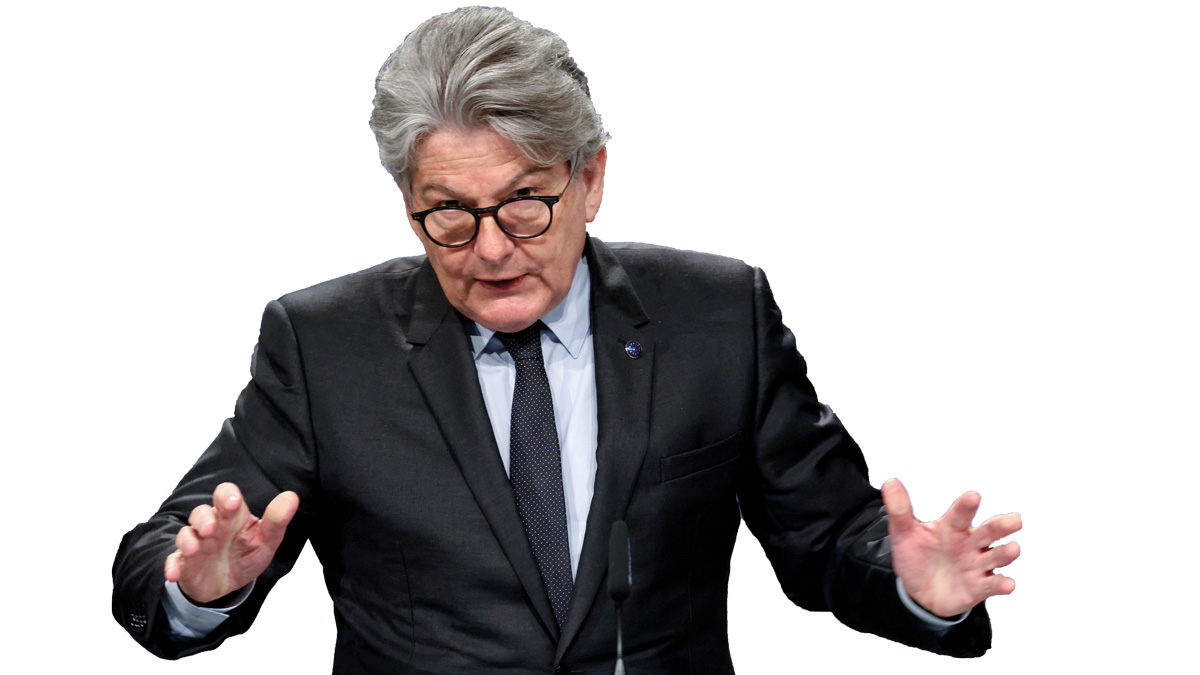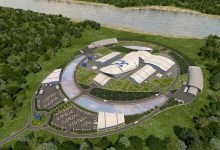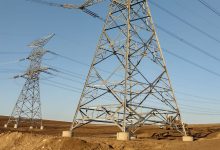Nuclear Power Preparing to Change Colour
Cutting-edge nuclear power plants will need investments of EUR 500 billion by 2050, according to the European Commissioner for the Internal Market, Thierry Breton, and to support these projects it is ‘crucial’ for nuclear power to receive the green label within energy transition.
The European Commission (EC) has already prepared a draft proposing rules for the classification of investments that will meet the climate sustainability criteria (“sustainable finance taxonomy”). Therefore, nuclear power plants will be considered green if there is a plan, funding, and location suitable for the elimination of radioactive waste.
The draft has already ignited the spirits in the European Union. While France, a country that ensures 70% of its energy consumption from nuclear source, supports it, Germany, but also other states, vehemently oppose to such draft and threatened to even consider legal action against the European Commission. Together with France, several states, including Romania, have signed a declaration requesting the Commission that nuclear energy be included in the list of green investments.
“Existing nuclear plants alone will need €50 billion of investment from now until 2030. And new generation ones will need €500 billion by 2050,” said Thierry Breton. At the end of last year, the European Commission announced that it was preparing a draft according to which some nuclear power plants and some of the gas-fired power plants could be considered green projects, which would make it easier for them to attract funding. The Community Executive has raised comments on this draft until January 12, following to officially present the text of its proposal. Currently, about 26% of electricity produced in the EU comes from nuclear power plants and Commissioner Thierry Breton has estimated that it would account for at least 15% of the energy mix in 2050.
Romania supports the EC initiative
Romania, country which operates two nuclear units, and which has several projects providing for the construction of two other groups and small nuclear power plants with a US partner, has publicly requested, together with other states, the inclusion of nuclear energy in the list of ‘green’ investments. All signatory countries, headed by France, point out that the increase in energy prices has highlighted the importance of reducing dependence on third countries, as soon as possible. Nuclear energy is a source of affordable and independent energy and should be included in the list of ‘green’ investments. “In order to gain the climate battle, we need nuclear energy. For all of us, nuclear energy is a crucial and reliable asset for a low-carbon future,” reads a statement signed in October 2021 by the representatives of Poland, Hungary, Slovakia, Bulgaria, Croatia, Romania and Slovenia.
Nuclearelectrica wants an agreement with the Romanian state
Nuclearelectrica National Company (SNN) will decide regarding the construction of reactors 3 and 4 conditional upon conclusion of an agreement with the Romanian state establishing the modality of funding and the support mechanisms for the implementation of this project. The feasibility study for the project was completed in December 2020, being made by the Deloitte and Kinectrics Association. According to the update of the ‘Feasibility Study for the completion of the project of Units 3 and 4 in Cernavoda NPP’, the conclusion is that the project of Units 3 and 4 is financially sustainable, the cash flow requirements being fulfilled. Regarding the modality of implementation of the project of Units 3 and 4 of Cernavoda NPP, international practices indicate that it is necessary to allocate significant financial resources (high risk capital) in the preparatory/pre-project phase, for the adequate definition of a nuclear power plant project, allowing the final investment decision to be made. In view of restarting the project, considering the best international practices in the field (of allocating significant funds in the preparatory/pre-project phase for the adequate definition of the project allowing the final investment decision to be made), the modality of implementation considered by the strategy consists of a staged approach, namely splitting the project into three distinct stages of development. The last stage is the actual construction of the units, but it will start only after reanalysing the feasibility of the project based on the new technical and economic indicators resulting from the previous stages and after the Final Investment Decision is made. A few conditions must be fulfilled for its adoption, including obtaining the necessary authorizations from the European Commission for the support measures and structuring and closing the funding package for the project.
Reactors 3 and 4 to be operational in 2028 and 2030
According to Energy Minister Virgil Popescu, the construction project for reactors 3 and 4 entered in a straight line.
“A contract was concluded for the construction of Units 3 and 4, as well as for upgrading Unit 1. We are currently in discussions with US, Canadian and French partners to establish the financial model, these following to be commissioned in 2028 and 2030”, the minister stated at the end of 2021. The estimated value of the project is USD 7 billion.
We recall that the Extended Intergovernmental Agreement between Romania and the United States of America was initialled in Washington DC on October 9, 2020, allowing cooperation in areas of importance to Romania, including the civil nuclear field, especially the project of Units 3 and 4 and the refurbishment of Unit 1. At the level of 2030, nuclear energy will ensure approximately 35% of the consumption needs by operating 4 CANDU nuclear units, will avoid the release of 20,000,000 million tons of CO2/year, will indirectly create approximately 19,000 jobs in the internal supply chain, will contribute to the development of education and research in the nuclear and related fields.
Romania, regional hub for SMRs?
Another important project of Romania in the nuclear field is the construction of small modular reactors (SMR).
“Romania will become the regional leader for small modular reactors, those SMRs, together with the strategic partner, the United States. And here Romania will play a regional role, we will also be a regional hub, both for production and operation for these reactors. What until now we could only dream of, can become a reality. And nuclear energy is energy with zero carbon emissions, it ensures an energy comfort of production,” the Energy Minister has stated. Therefore, a nuclear power plant could be built in Romania with US cutting-edge technology. It will operate with small modular reactors, a new concept, which received approval only in 2021. The first functional reactor of this type in the world could be ready in Romania in 2028, after the agreement for its construction was concluded at the beginning of November 2021 at the Glasgow climate summit, where President Klaus Iohannis met with John Kerry, special envoy of the US president.
“The commercial agreement will include a six-module NuScale plant, initially creating over 3,700 US and Romanian jobs, including possible union jobs, with the potential to create 30,000 US and Romanian jobs as the project grows. Deployment of SMR technology will be an essential contributor to a decarbonized power sector and net-zero future,” the White House transmitted in a press release on this occasion. The proposed NuScale reactor is extremely small, compared to the usual power plants, and has a power of 60 MWh. In total, the structure is 2.7 meters in diameter, 20 meters high and weighs 590 tons. It runs on uranium 235 and is fuelled every two years. The NuScale reactor uses cooling technologies like those of conventional power plants. It is placed in a kind of indoor pool to counteract the effects of earthquakes and, at least in theory, can cool itself in case of damage. NuScale Power, the company that will build the complex in Romania, has been conducting research in the field for more than a decade, has built several prototypes and is working on a complex in the US state of Idaho. However, it will not be ready before 2030 and will cost over USD 6bn, although the estimates indicated USD 3.7bn four years ago.
Coal-fired energy reduced by 23% in the following decade
Romania hopes to replace, by building these SMR, about 23% of the coal-fired energy capacity in the following 10 years, according to the statements of Cosmin Ghita, CEO of Nuclearelectrica. This position is also supported by Energy Minister Virgil Popescu, who stated in turn: “Romania plans to reduce its carbon emissions by 55% by 2030 and its reliance on (energy) imports from 20.8% now to 17.8% in 2030. The development of new capabilities by 2030 is essential, because 80% of the power plants have exceeded their service life and 66% of the carbon dioxide emissions are generated by the energy sector”. To support the construction of these SMRs, in January 2021 the US Agency for Trade and Development (USTDA) provided Romania with a USD 1.27 million grant for technical assistance to identify and preliminary assess compatible locations for the SMR nuclear power plant. Also, in early November 2021, the US announced that it would finance Romania for a special training simulator for the development of SMR, in one of the universities in Romania. The support is part of a USD 25 million package granted by the US, at the COP26 summit, for six countries that support the future of nuclear energy (Romania, Poland, Ukraine, Brazil, Indonesia, and Kenya). Along with Romania, memoranda for SMR nuclear power plants from NuScale have also been signed by Bulgaria, Poland, the Czech Republic, Ukraine, or the UK, but the latter have chosen to develop their own project, together with Rolls Royce.
Countries and companies interested in the SMR concept
Currently, there are about 70 different concepts for these reactors in the world, in various phases of development, but no such complex producing electricity is operational, according to International Atomic Energy Agency (IAEA). Countries such as the US, the UK, Russia, Canada, France, South Africa, India, and Pakistan have already shown interest in the SMR technology, and large companies are involved in the development of such projects. Rolls-Royce, EDF and TerraPower are among the companies that have built or plan to build prototypes of small size reactors. For example, Rolls Royce wants to build a network of small reactors in the UK, country that has placed nuclear energy at the heart of the strategy for the reduction of carbon emissions in the following 15 years. Rolls Royce estimates that the first SMR reactor could cost GBP 2.2 billion and the following four, GBP 1.8 billion each.
Nuclearelectrica announced at the beginning of the year that it had submitted to the Ministry of Environment, Water and Forests the application for issuing the environmental permit for the project “Retrofitting of Unit 1 of Cernavoda NPP and expansion of the Spent Fuel Intermediary Storage Facility with MACSTOR 400 modules”, proposed to be placed in Constanta County, the town of Cernavoda. The environmental document is extremely important, its issuance involving several other permits and approvals obtained for the investment.
Nuclearelectrica management estimates that stopping the unit for retrofitting will take place during 2026-2028 and the estimated cost of the entire project will amount to EUR 1.5 billion. The cost of retrofitting will be covered from own sources and sources attracted from the market and then the service life of Unit 1 will be extended by 30 years, at less than half the cost of a nuclear reactor.







